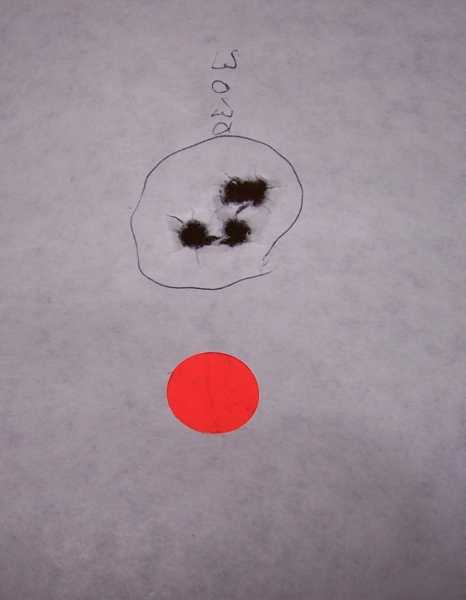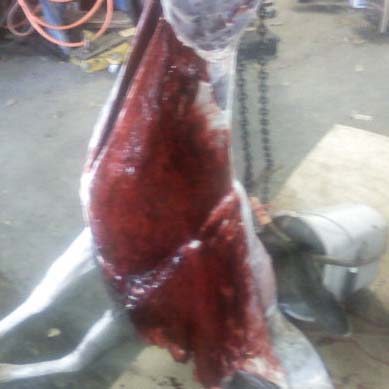I think I will avoid trouble and throw rocks!
When I was a kid tossing rocks that a good throwing rock had to have the right shape. A brick had poor flight characteristics and quickly plunged to the ground. A nicely round stream rock of the same weight travel bit a further and was a little more accurate.
In many ways I followed the “necchi program,” In short buy a box of cartridges or bullets and give them a try. I was fortunate that in my younger years the Western deer herds were abundant. The bottomline is that I have never found a standard factory cartridge that is considered adequate for deer a failure, but there are some I like more than others. The result is called, “Lessons Learn.”
Earlier I mentioned the 150-grain bullet from the 30-30 and the 150-grain bullet designed for the .303 British. I load the 150-grain RN made by Hornady for the 30-30 it has a B.C. of .186 and the Hornady 150-grain bullet for the .303 British has a B.C. of .361.
Comparing the two bullets loaded to a muzzle velocity of 2300 fps using Sierra Infinity Six software the 150-grain Round Nose fly’s like a brick. It quickly sheds velocity and energy when compared to the higher B.C. bullet in the .303 British.
Earlier I described the circumstances, in which I would use the Jungle Carbine chambered for the .303 British, snow on the ground and of course there is snow on the vegetation. It makes it tough to keep a scope clear of snow. The thick vegetation which limits the shooting distance calls for a fast action rifle. Both fit my needs because of the short barrels. When the weather is nicer I select the 30-30. When it comes to accuracy out two hundred yards the Jungle Carbine does not come close to my 30-30 Marlin. A tight shot with the 30-30 will be easier than with the JC.
This group is from my scope sighted 30-30, the upper two bullets are 150-grain Remington factory loads and the lower two are my handloaded 150-grain Hornady loads. I am working on loads for the .303 British to tighten up results at 100-yards. Because of my aged eyes the iron sights on the JC will be a limiting factor, but the flip side is the bad weather advantage.

Ballistic Coefficient (B.C.) represents the ability to overcome air resistance.
I load 165-grain bullets in the .300 Savage and the 30-06. I have been loading Hornady, Nosler, and Remington bullets. The flat base Hornady bullet has a B.C. of .387 and the boattail version has a B.C. of .435.
The lessons began early, but the interpolation of the data continues. The first buck I killed with the .270 Winchester was using a factory loaded 130-grain Bronze Point which has a B.C. of .372. The bullet hit the buck behind the shoulder and fragmentized in the chest cavity. Heart, lungs, and liver were destroyed. On the far side there were two or three lacerations caused by bone or bullet fragments. Only fragments from the bullet were recovered. #2 brother got a .270 and we continued to use the Bronze Point with the same results. I suspect the S.D. to be .242.
Sierra says that B.C. has little effect out two 250 yards or so. That means that it has had little effect on most of the deer I have killed in the last fifty years. But it is import for those beyond 250 yards. Fred the logger use to take my brother and I out hunting all the time. Fred killed a lot of bucks with his M760 Remington in .270 Winchester. Fred was teaching me a lesson regarding S.D. every season, but being a youngster it took time to sink in. Fred used the 150-grain Remington C-L on deer. At close range the bullet did not fragment like my speedy 130-grain bullets. It made a hole going in and another going out. If a little tracking was needed there was a good blood trail. The bullet has a S.D. of approximately .269, and a B.C. of .261. Field results tell the story; it is a very effective bullet.
A very similar bullet might have stagnated the .280 Remington when it was introduced. Remington offered a 165-grain RN C-L at about 2820 fps. In a head to head competition with the .270 Winchester and the flag ship 130-grain load the .280 failed to attract the following it deserved.
In the world of cup and core bullets for use in 30 caliber other than the 30-30 I like a bullet that has a B.C. greater than .400 and a S.D. at or greater than .250. In fact I use those as minimum standards for the 270 Winchester and 7MM Remington Magnum.
One of my favorite bullets in the .270 Winchester is the 150-grain Hornady Spire Point with a B.C. of .462 and a S.D. of 279. All three of my rifles like it. Unlike the 130-grain bullets I started out with this bullet exits. I shot this buck at 32.5 yards and the 150-grain load at 2870 fps from my rifle caused a lot of damage and created an exit about 2-inches. At the range the high S.D. was a key factor.

Does it become a tossup and how much damage the hunter is willing to except when using the same cartridge. The bullet that fragmentizes and kills the deer with little damage to the off side, and offers a limited blood trail; Or a bullet that does a lot of damage entering and exiting?
I do not understand how they killed as many deer as they did during my Dad’s generation. Early on I can remember Dad having an octagon barrel 32-40 around the house, with some very terrible flat point Winchester bullets. They must have flown like a brick, but they did not set off the rounds in the magazine. I was more impressed with the different rounds he and his buddy had for the 32-Special and the 303 Savage, Sivertips, Remington C-L, and hollow points. Things improve years later when they bought ammunition for the 300 Savage and 308. The bullets were more pointed.
It would have been interesting to have and record a conversation with Dad regarding the “optimum bullet’ for his rifles, the first in 1940 and the second in 1980. I am sure he had dreams and thoughts beyond his 300 Savage, what a surprise when he gave me a new M760 Remington in 270 Winchester for a birthday.